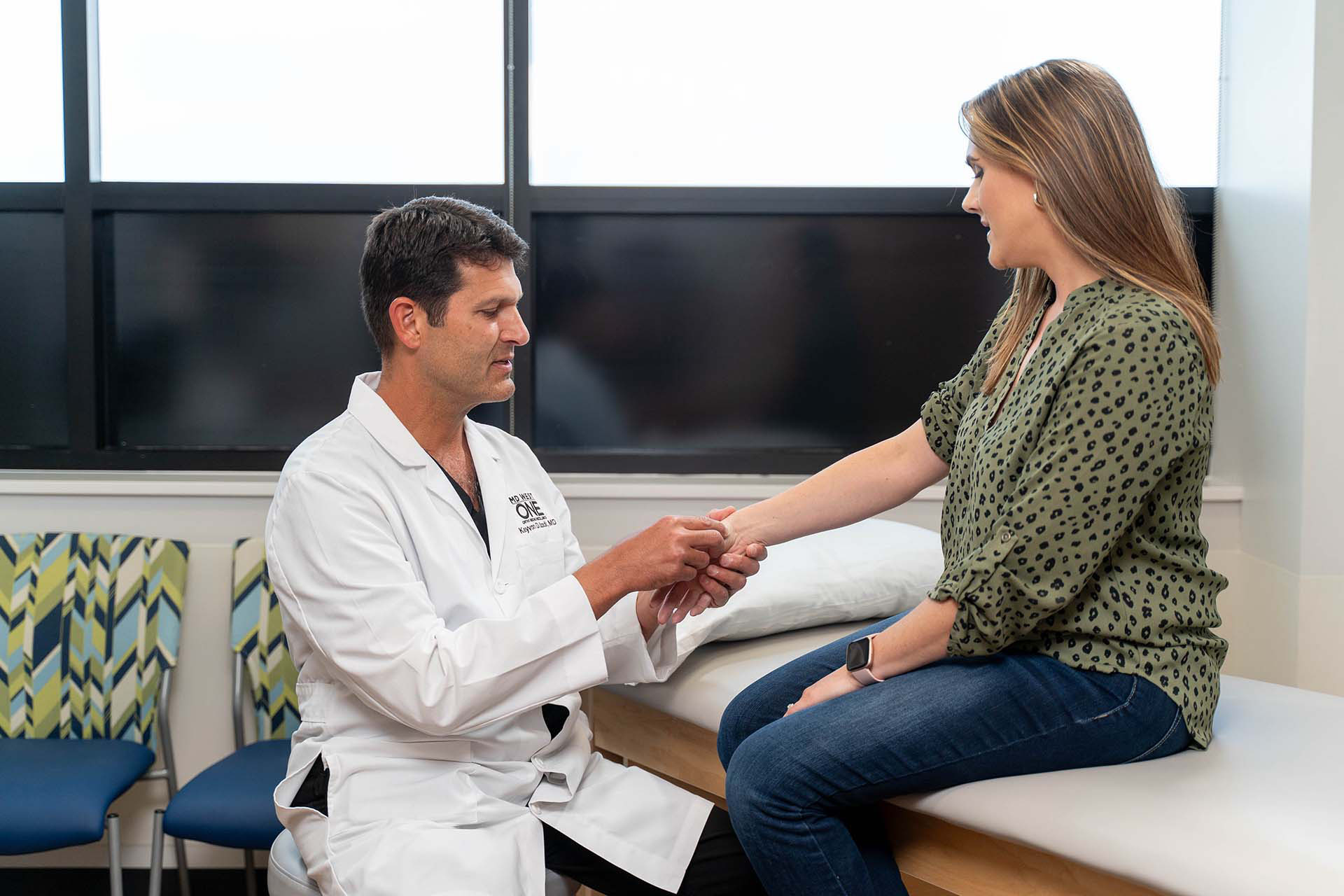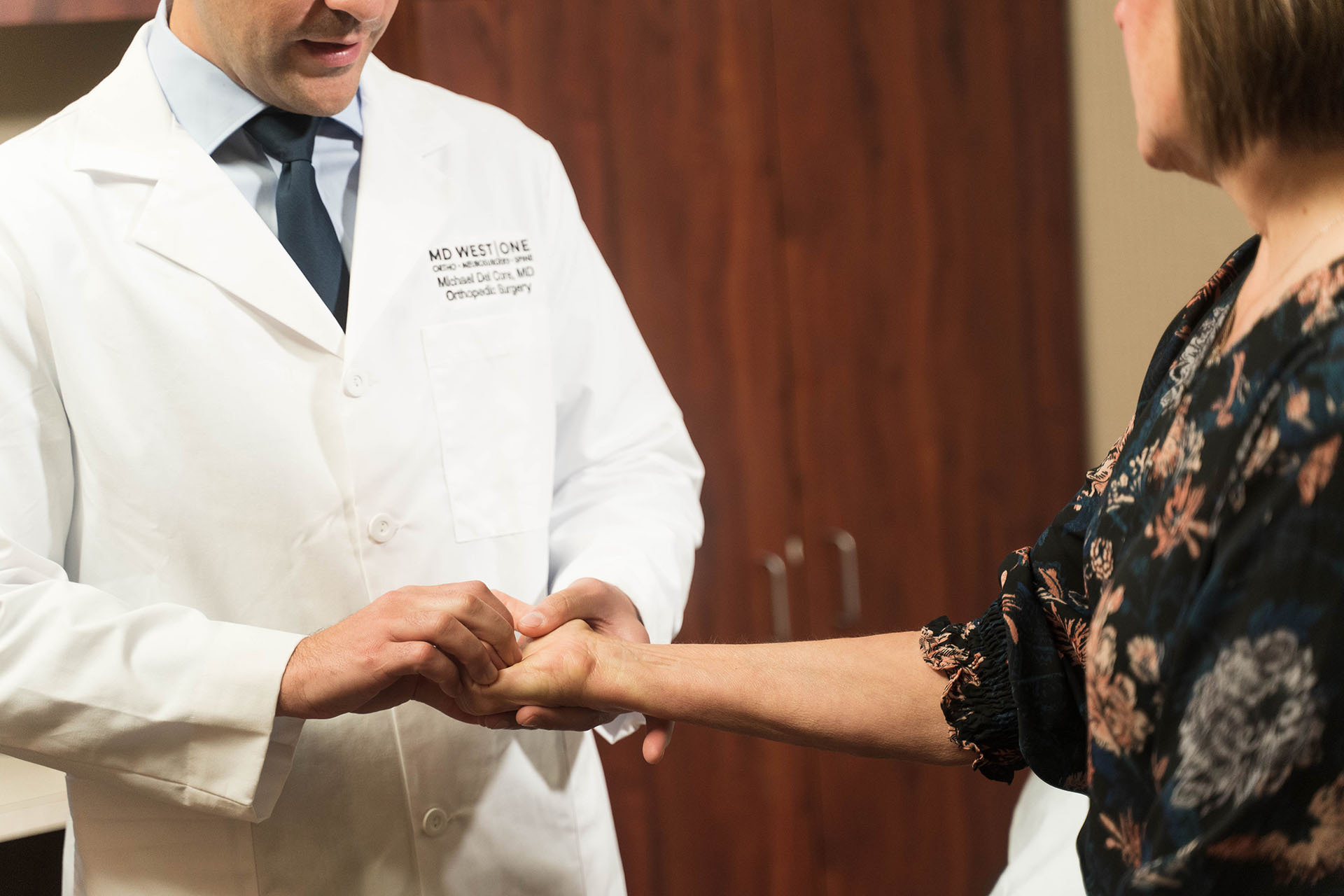Are you suffering from symptoms of Colles' Fracture?
The Omaha Hand & Wrist Specialists at MD West ONE can properly diagnose and treat Colles' Fracture through surgical and non-surgical treatments. If you have the following symptoms, you may want to make an appointment with one of our Board Certified Specialists.
- Pain on the top of the wrist
- Bruising or swelling of the wrist
- Inability to pick up objects

Meet MD West ONE's hand specialists and learn more about how they treat Colles' Fracture.

Michael Del Core, MD
Hand & Wrist Specialist

Daniel L. Gaffney, MD
Hand & Wrist Specialist

Kayvon Izadi, MD
Hand & Wrist Specialist

John "Jack" A. McCarthy, MD
Hand & Wrist Specialist

Micheala McCarthy, MD
Hand & Wrist Specialist

Jeffrey J. Tiedeman, MD
Hand & Wrist Specialist
Colles' Fracture, Surgical Alternatives, and Surgical option(s)
What is Colles' Fracture?
Your arm is made up of two parallel bones, known as the ulna and radius. These bones are attached to the carpal bones that make up your wrist. The radius bone is located on the same side of your arm as the relevant thumb.
A Colles' fracture occurs when the radius is damaged due to the wrist bending unusually. Its distinctive shape has given it the nickname dinner fork deformity. While many people call this condition a broken wrist, this is incorrect. The Colles' fracture actually occurs in the radius bone right before where it meets the carpal bones in the wrist.
A Colles' fracture usually occurs after trying to break a fall with an outstretched hand or extended wrist. Sometimes direct trauma can lead to a Colles' fracture. If only the ulna is damaged, it is a different condition known as a distal radius fracture.

Are there any non-surgical treatments?
Colles' fracture treatment options range from non-surgical to surgical intervention. Your physician will choose the best option for your condition and lifestyle goals.
Your physician will clear you for normal activity after a few weeks of immobilization.
Your physician may recommend a simple bracing or splint for your injury. Keeping the affected injury immobile will help the Colles' fracture heal. Your physician will recommend a device for your healing. Rehabilitation with physical therapy may be necessary.
You can manage the pain of a Colles' fracture with RICE therapy (rest, ice, compress, elevate). In addition to RICE therapy you can use over-the-counter pain relievers such as ibuprofen or acetaminophen. Be careful with any pain reliever because these can become habit-forming.
What if the non-surgical options do not work for me?
Surgery is recommended for unstable fractures. Typically surgery involves placing pins or plates to help realign the bones. The pins and plates are removed once the fracture has stabilized.
American Society for Surgery of the Hand
All of the hand surgeons in the practice are recognized members of the American Society for Surgery of the Hand. It is the oldest and most prestigious medical society dedicated to the hand and upper extremity. The mission of the society is to advance science and practice of hand and upper extremity surgery through education, research, and advocacy on behalf of patients and practitioners. These physicians dedicate their time and energy to improving the patient experience and their knowledge in their field. For more information, visit the American Society for Surgery of the Hand website.
